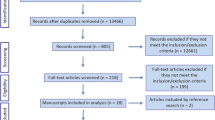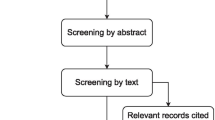Abstract
Human locomotor adaptation requires feedback and feed-forward control processes to maintain an appropriate walking pattern. Adaptation may require the use of visual and proprioceptive input to decode altered movement dynamics and generate an appropriate response. After a person transfers from an extreme sensory environment and back, as astronauts do when they return from spaceflight, the prolonged period required for re-adaptation can pose a significant burden. In our previous paper, we showed that plantar tactile vibration during a split-belt adaptation task did not interfere with the treadmill adaptation however, larger overground transfer effects with a slower decay resulted. Such effects, in the absence of visual feedback (of motion) and perturbation of tactile feedback, are believed to be due to a higher proprioceptive gain because, in the absence of relevant external dynamic cues such as optic flow, reliance on body-based cues is enhanced during gait tasks through multisensory integration. In this study, we therefore investigated the effect of optic flow on tactile-stimulated split-belt adaptation as a paradigm to facilitate the sensorimotor adaptation process. Twenty healthy young adults, separated into two matched groups, participated in the study. All participants performed an overground walking trial followed by a split-belt treadmill adaptation protocol. The tactile group (TC) received vibratory plantar tactile stimulation only, whereas the virtual reality and tactile group (VRT) received an additional concurrent visual stimulation: a moving virtual corridor, inducing perceived self-motion. A post-treadmill overground trial was performed to determine adaptation transfer. Interlimb coordination of spatiotemporal and kinetic variables was quantified using symmetry indices and analyzed using repeated-measures ANOVA. Marked changes of step length characteristics were observed in both groups during split-belt adaptation. Stance and swing time symmetries were similar in the two groups, suggesting that temporal parameters are not modified by optic flow. However, whereas the TC group displayed significant stance time asymmetries during the post-treadmill session, such aftereffects were absent in the VRT group. The results indicated that the enhanced transfer resulting from exposure to plantar cutaneous vibration during adaptation was alleviated by optic flow information. The presence of visual self-motion information may have reduced proprioceptive gain during learning. Thus, during overground walking, the learned proprioceptive split-belt pattern is more rapidly overridden by visual input due to its increased relative gain. The results suggest that when visual stimulation is provided during adaptive training, the system acquires the novel movement dynamics while maintaining the ability to flexibly adapt to different environments.





Similar content being viewed by others
References
Bacarin TA, Sacco IC, Hennig EM (2009) Plantar pressure distribution patterns during gait in diabetic neuropathy patients with a history of foot ulcers. Clinics (Sao Paulo) 64:113–120
Berniker M, Kording K (2008) Estimating the sources of motor errors for adaptation and generalization. Nat Neurosci 11:1454–1461
Bove M, Nardone A, Schieppati M (2003) Effects of leg muscle tendon vibration on group Ia and group II reflex responses to stance perturbation in humans. J Physiol 550:617–630. doi:10.1113/jphysiol.2003.043331
Campos JL, Butler JS, Bülthoff HH (2014) Contributions of visual and proprioceptive information to travelled distance estimation during changing sensory congruencies. Exp Brain Res 232(10):3277–3289
Chien JH, Eikema DJ, Mukherjee M, Stergiou N (2014) Locomotor sensory organization test: a novel paradigm for the assessment of sensory contributions in gait. Ann Biomed Eng 42(12):2512–2523
Eils E, Nolte S, Tewes M, Thorwesten L, Volker K, Rosenbaum D (2002) Modified pressure distribution patterns in walking following reduction of plantar sensation. J Biomech 35:1307–1313
Fajen BR (2013) Guiding locomotion in complex, dynamic environments. Front Behav Neurosci 7:85. doi:10.3389/fnbeh.2013.00085
Finley JM, Statton MA, Bastian AJ (2014) A novel optic flow pattern speeds split-belt locomotor adaptation. J Neurophysiol 111:969–976. doi:10.1152/jn.00513.2013
Green AM, Angelaki DE (2010) Multisensory integration: resolving sensory ambiguities to build novel representations. Curr Opin Neurobiol 20(3):353–360
Hoogkamer W, Bruijn SM, Duysens J (2014) Stride length asymmetry in split-belt locomotion. Gait Posture 39:652–654. doi:10.1016/j.gaitpost.2013.08.030
Katsavelis D, Mukherjee M, Decker L, Stergiou N (2010) The effect of virtual reality on gait variability. Nonlinear Dyn Psychol Life Sci 14:239–256
Kavounoudias A, Roll R, Roll JP (1998) The plantar sole is a ‘dynamometric map’ for human balance control. NeuroReport 9:3247–3252
Kiss RM (2010) Comparison between kinematic and ground reaction force techniques for determining gait events during treadmill walking at different speeds. Med Eng Phys 32(6):662–667
Leung YY, Bensmaïa SJ, Hsiao SS, Johnson KO (2005) Time-course of vibratory adaptation and recovery in cutaneous mechanoreceptive afferents. J Neurophysiol 5:3037–3045. doi:10.1152/jn.00001.2005
MacLellan MJ, Patla AE (2006) Adaptations of walking pattern on a compliant surface to regulate dynamic stability. Exp Brain Res 173:521–530. doi:10.1007/s00221-006-0399-5
Maclellan MJ, Ivanenko YP, Massaad F, Bruijn SM, Duysens J, Lacquaniti F (2014) Muscle activation patterns are bilaterally linked during split-belt treadmill walking in humans. J Neurophysiol 111(8):1541–1552
Mawase F, Haizler T, Bar-Haim S, Karniel A (2013) Kinetic adaptation during locomotion on a split-belt treadmill. J Neurophysiol 109:2216–2227. doi:10.1152/jn.00938.2012
Mickelborough J, van der Linden ML, Richards J, Ennos AR (2000) Validity and reliability of a kinematic protocol for determining foot contact events. Gait Posture 11(1):32–37
Mukherjee M, Siu KC, Katsavelis D, Fayad P, Stergiou N (2011) The influence of visual perception of self-motion on locomotor adaptation to unilateral limb loading. J Mot Behav 43(2):101–111
Mukherjee M, Eikema DJ, Chien JH, Myers SA, Scott-Pandorf M, Bloomberg JJ, Stergiou N (2015) Plantar tactile perturbations enhance transfer of split-belt locomotor adaptation. Exp Brain Res 233(10):3005–3012
Nurse MA, Nigg BM (2001) The effect of changes in foot sensation on plantar pressure and muscle activity. Clin Biomech (Bristol, Avon) 16:719–727
Oliveira CB, Medeiros IR, Greters MG, Frota NA, Lucato LT, Scaff M, Conforto AB (2011) Abnormal sensory integration affects balance control in hemiparetic patients within the first year after stroke. Clinics (Sao Paulo) 66:2043–2048
Patel M, Kaski D, Bronstein AM (2014) Attention modulates adaptive motor learning in the ‘broken escalator’ paradigm. Exp Brain Res 232:2349–2357. doi:10.1007/s00221-014-3931-z
Pestilli F, Carrasco M, Heeger DJ, Gardner JL (2011) Attentional enhancement via selection and pooling of early sensory responses in human visual cortex. Neuron 72:832–846 doi:10.1016/j.neuron.2011.09.025
Peterka RJ, Loughlin PJ (2004) Dynamic regulation of sensorimotor integration in human postural control. J Neurophysiol 91:410–423. doi:10.1152/jn.00516.2003
Prokop T, Schubert M, Berger W (1997) Visual influence on human locomotion. Modulation to changes in optic flow. Exp Brain Res 114:63–70
Reisman DS, Block HJ, Bastian AJ (2005) Interlimb coordination during locomotion: what can be adapted and stored? J Neurophysiol 94:2403–2415. doi:10.1152/jn.00089.2005
Reisman DS, Wityk R, Silver K, Bastian AJ (2009) Split-belt treadmill adaptation transfers to overground walking in persons poststroke. Neurorehabil Neural Repair 23:735–744. doi:10.1177/1545968309332880
Reisman DS, Bastian AJ, Morton SM (2010) Neurophysiologic and rehabilitation insights from the split-belt and other locomotor adaptation paradigms. Phys Ther 90:187–195. doi:10.2522/ptj.20090073
Richards JT, Mulavara AP, Bloomberg JJ (2007) The interplay between strategic and adaptive control mechanisms in plastic recalibration of locomotor function. Exp Brain Res 178(3):326–338
Roemmich RT, Nocera JR, Stegemoller EL, Hassan A, Okun MS, Hass CJ (2014) Locomotor adaptation and locomotor adaptive learning in Parkinson’s disease and normal aging. Clin Neurophysiol 125:313–319. doi:10.1016/j.clinph.2013.07.003
Rosenkranz K, Rothwell JC (2012) Modulation of proprioceptive integration in the motor cortex shapes human motor learning. J Neurosci 32:9000–9006. doi:10.1523/JNEUROSCI.0120-12.2012
Scocco DH, Wagner JN, Racosta J, Chade A, Gershanik OS (2014) Subjective visual vertical in Pisa syndrome. Parkinsonism Relat Disord 20:878–883. doi:10.1016/j.parkreldis.2014.04.030
Speers RA, Paloski WH, Kuo AD (1998) Multivariate changes in coordination of postural control following spaceflight. J Biomech 31:883–889
Torres-Oviedo G, Bastian AJ (2010) Seeing is believing: effects of visual contextual cues on learning and transfer of locomotor adaptation. J Neurosci 30:17015–17022. doi:10.1523/JNEUROSCI.4205-10.2010
Torres-Oviedo G, Bastian AJ (2012) Natural error patterns enable transfer of motor learning to novel contexts. J Neurophysiol 107:346–356. doi:10.1152/jn.00570.2011
Torres-Oviedo G, Vasudevan E, Malone L, Bastian AJ (2011) Locomotor adaptation. Prog Brain Res 191:65–74. doi:10.1016/B978-0-444-53752-2.00013-8
Vasudevan EV, Bastian AJ (2010) Split-belt treadmill adaptation shows different functional networks for fast and slow human walking. J Neurophysiol 103:183–191. doi:10.1152/jn.00501.2009
Warren WH Jr, Kay BA, Zosh WD, Duchon AP, Sahuc S (2001) Optic flow is used to control human walking. Nat Neurosci 4:213–216. doi:10.1038/84054
Zehr EP, Haridas C (2003) Modulation of cutaneous reflexes in arm muscles during walking: further evidence of similar control mechanisms for rhythmic human arm and leg movements. Exp Brain Res 149:260–266. doi:10.1007/s00221-003-1377-9
Zehr EP, Nakajima T, Barss T et al (2014) Cutaneous stimulation of discrete regions of the sole during locomotion produces “sensory steering” of the foot. BMC Sports Sci Med Rehabil 6:33. doi:10.1186/2052-1847-6-33
Zeni JA Jr, Richards JG, Higginson JS (2008) Two simple methods for determining gait events during treadmill and overground walking using kinematic data. Gait Posture 27(4):710–714
Acknowledgments
This study was supported by NASA Experimental Program to Stimulate Competitive Research (EPSCoR) grant number NNX11AM06A and the Center of Biomedical Research Excellence grant (1P20GM109090-01) from NIGMS/NIH. The content is solely the responsibility of the authors and does not necessarily represent the official views of the NASA or the NIH.
Author information
Authors and Affiliations
Corresponding author
Rights and permissions
About this article
Cite this article
Eikema, D.J.A., Chien, J.H., Stergiou, N. et al. Optic flow improves adaptability of spatiotemporal characteristics during split-belt locomotor adaptation with tactile stimulation. Exp Brain Res 234, 511–522 (2016). https://doi.org/10.1007/s00221-015-4484-5
Received:
Accepted:
Published:
Issue Date:
DOI: https://doi.org/10.1007/s00221-015-4484-5




